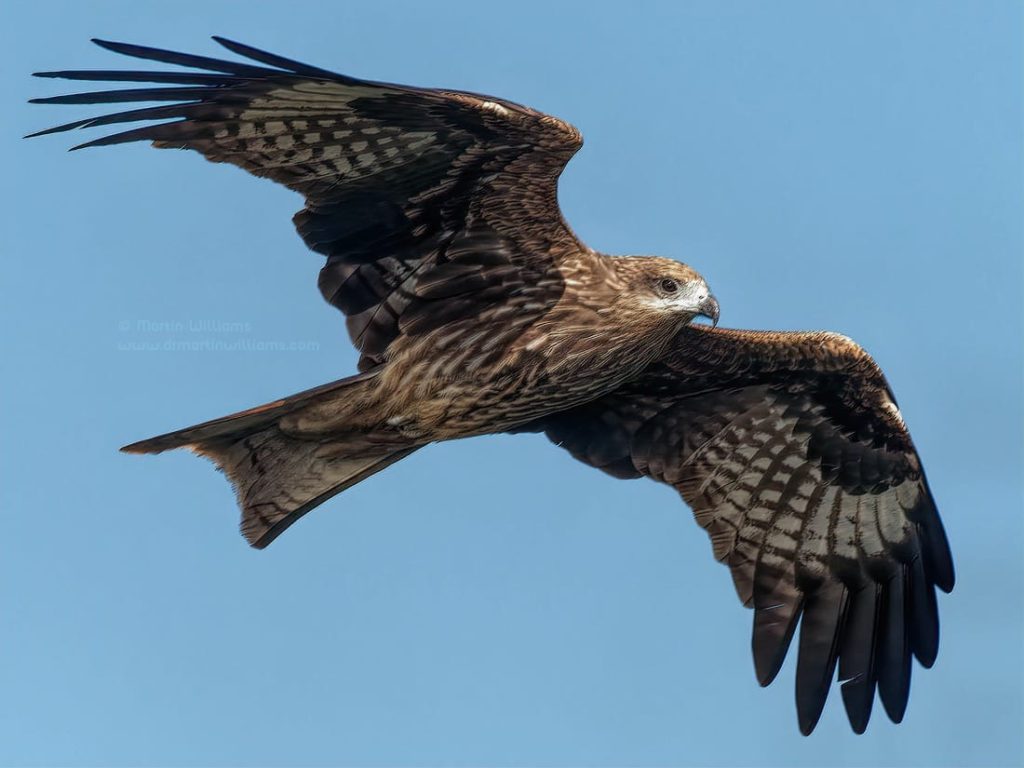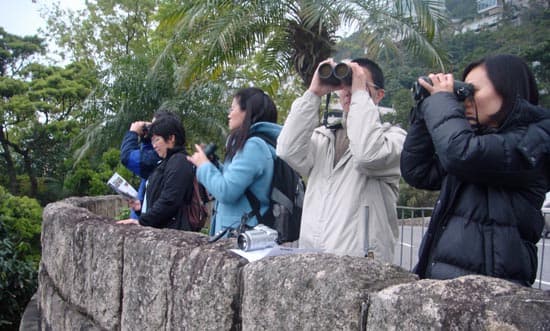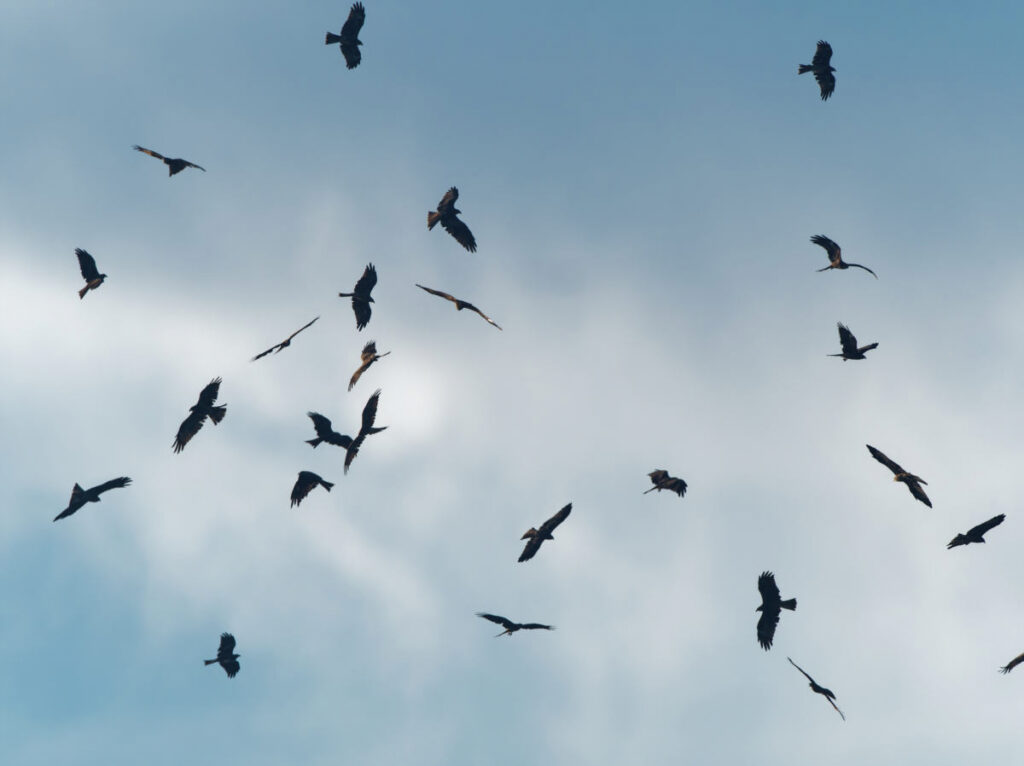Black Kites are among the territory’s most familiar birds.
It’s late on a grey, February afternoon, and six birdwatchers gather by a road junction high on Hong Kong Island. Oblivious to cars passing behind, headed for luxury residences around the Peak, they look across a wooded hillside that plunges towards the South China Sea.
Five black kites are soaring above the hillside, effortlessly riding air currents on their long wings, wingtip feathers splayed like fingers. With their metre-and-a-half wingspans, and forked tails, the kites are by far the commonest birds of prey in Hong Kong – and among the territory’s most familiar birds. Despite the name, they are brown rather than black.

Three of the birdwatchers belong to Hong Kong’s Kite Research Group. They are about to begin a count of the birds, as they gather at one of the largest kite roosts in east Asia. “It’s kind of soothing to see the kites,” says Beta Yip, a stalwart of the monthly counts. He scans the sky, points to two more birds drifting overhead, and four soaring to the east.
“Two minutes,” says Yip, warning fellow researchers Vicky Yeung and Maria Lo that it will soon be time to check numbers. The time arrives, and the three look all around, using binoculars to check for distant birds, and then report how many kites can be seen at once. They confer, and Yip records 23 kites in a notebook.

A nearby vantage looks north, across the city, where more kites are circling and gliding above city skyscrapers. They seem unhurried, yet they too are bound for the roost. Maybe they have come across Kowloon from the New Territories; some might have spent the day over and around Victoria Harbour.
Kites are common in Hong Kong
In the late 19th and early 20th centuries, naturalists described black kite as common in Hong, with numbers far higher in winter. This remains the case, and the Kite Research Group’s counts suggest the winter population remains stable, typically in the range 1500-2000, and with the highest count 3053 in Dec 2003. Most fly north in spring – to nest in China, or perhaps Russia – leaving a resident population of around 30 pairs.
The kites are scavengers, and in the harbour they play a role gulls would elsewhere – snatching dead fish from the water. “Kites are like an indicator of the state of birds in Hong Kong,” says Maria Lo, explaining why she helps with the counts.
“Kites are special, and it’s a challenge to count them – especially in winter,” adds Vicky Yeung. On winter days, there may be hundreds of kites circling together, forming a scene she likens to a“tornado”.
Today, though, the watchers record no more than 84 kites during any of their spot counts, and the final tally is 234. With spring beginning, many kites have already departed Hong Kong, and are en route to their breeding haunts.
The light fades. Yip has remarked that birds may arrive late and drop in quickly, “Like a meteor shower”. Sure enough, he looks up and points out two kites that dash overhead, fold their wings, and plummet down to the woods, disappearing in the gloom.
Seeing Black Kites in Hong Kong
It is easy to see black kites in Hong Kong – especially over Victoria Harbour and nearby areas. Watch from the Star Ferry, say, and you may see a kite swoop down to snatch a dead fish from the water. The best vantages for the kite roost are near Magazine Gap, including by the junction of Peak Road and Guildford Road; the best time to start watching and taking photos of kites heading to the roost is as sunset approaches.
The kites don’t tend to pass very close to this watchpoint – perhaps the best photo opportunities are of groups of birds, also of kites above city buildings. For a chance of very close kites during daytime – including above and just below you, and at eye level – maybe try the lookout pavilion atop north Cheung Chau. There’s also a kite roost above Sai Wan, southwest Cheung Chau, and especially on breezy late afternoons the kites may soar over here, perhaps in gatherings of a hundred or more (in 2022, an immature Lesser Frigatebird often joined this roost in late summer and autumn).

The Hong Kong Birdwatching Society’s Kite Research Group would welcome interesting records, such as of nesting kites – and you can participate in kite counts. For information, visit www.hkbws.org.hk.
Here’s a video I shot during the count, in February 2010:

 Black Kites are among the territory’s most familiar birds.
Black Kites are among the territory’s most familiar birds.